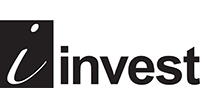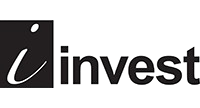By aligning the 3Ps of People, Purpose and Performance, leaders can create people-first workplaces that align with all demographics, says Gaelle Devins of Breitling
People are quick to seek new opportunities when they become bored at work and feel something is missing. It’s very common to job hop until you find a company that matches your values and offers real meaning to your career.
Gallup’s State of the Global Workplace Report 2025 reveals that employee engagement globally has fallen for only the second time this year since records began. This is particularly evident among younger workers, such as Generation Z, and among managers struggling to balance rising workloads with the shifting expectations of their teams.
A survey of UK workers by Go1 found that Gen Z stay in a job for an average of 1.7 years, compared to 5.7 years for Baby Boomers. Gen Z are also quicker to act when they are unhappy at work, often waiting just 4.1 months before deciding to leave, while older generations typically wait a year or more.
Quitting a job to protect your wellbeing used to be taboo. What was once seen as irresponsible is now a respected move across all generations. Society is now accepting of the idea that people come first.
The people-first mindset
Embracing a people-first mindset will help retain employees and prevent staff turnover. This must begin with a shift in leadership from the traditional control and command style to one that is more human.
To see this shift, leaders need to release their outdated beliefs and break any walls that will separate themselves from their teams. They need to lead as their authentic selves and show their vulnerabilities, which will in turn create space for the rest of the workforce to do the same. People are much more likely to find meaning at work when they are able to show up as their full selves and embrace their vulnerabilities, which will build trust as both employees and leaders commit to personal growth.
Organisations that don’t evolve will risk becoming stagnant, which will only reduce employee retention and engagement and ultimately affect long-term success. To achieve a people-first workplace, both the company and individuals need to commit to working together to ensure everyone achieves meaning at work.
“When personal values overlap with professional aspirations it fosters a fulfilling work environment”
People need purpose
People hold up a business, and purpose provides the direction to guide their actions and work. Leaders in turn have a responsibility to bring purpose, and care for the people who work for them.
When balanced with people and performance, purpose is a powerful catalyst that unlocks the transformative state FLOW@WORK, where people reach new levels of happiness at work, engagement and productivity. Everyone wants to find meaning at work and when they find it, it draws a deeper connection between people and their roles. When a team has a clear purpose, they are more engaged, resilient and dedicated to the organisation they work for.
When personal values overlap with professional aspirations it fosters a fulfilling work environment. This is backed up by data: a Deloitte survey found that 86% of Gen Z say a sense of purpose is key to job satisfaction. Older generations are less likely to switch jobs if their purpose isn’t aligned, however research shows that for Baby Boomers, 94% find work holds significant value in their lives, compared to 39% of Gen Z.
This generational difference matters. Gen Z might leave quickly if they feel disconnected from purpose, whereas Boomers might choose to stay but gradually become less engaged if the purpose they are seeking is missing.
Performance as a critical moderating factor
Stay focussed on connecting people to their purpose and make sure tasks are matched to the capabilities of your team. Work should be demanding enough to stretch the capacity of your team, but not so overwhelming that it becomes stressful or causes motivation to dip. By striking this delicate balance, businesses create opportunities to enter the state of FLOW@WORK, wherein people are engaged, focused and performing at their best.
Fostering an environment where people come first is important for a fulfilling workplace. When there is a shared purpose and wellbeing is prioritised, leaders can cultivate a high-achieving and happy workforce.
By aligning the 3Ps – People, Purpose and Performance – businesses can achieve the state of FLOW@WORK, representing the pinnacle of organisational success, where individuals thrive, teams flourish and companies are able to realise their full potential. Leaders that champion the well-being and engagement of their people, align their team’s efforts with a compelling purpose and maintain a relentless focus on performance, will empower their teams to thrive.
KPIs need a rethink
And as a leader, you have the power to change the way we currently work and create a happier and healthier workplace. One of the ways to do this is to bring in new KPIs that are designed for the people and not the system. Dare to introduce metrics that will help you assess how your people are doing and feeling, as opposed to how they are performing.
You can introduce traditional metrics that revolve around the employee journey. Your employee life cycle involves various touchpoints, including hiring, onboarding, training, coaching, performance improvement plans, recognition and promotion. It is crucial to actively assess, measure and analyse the experience across each of these touchpoints. By doing so, you can identify areas for improvement as an organisation.
It is important to recognise that by prioritising a people-centric KPI approach, leaders ultimately contribute to the overall success and performance of the organisation. While some may argue that serving the people is, in essence, serving the system, it is crucial to acknowledge that the primary focus and benefits should be directed towards the individuals within the organisation.
By nurturing a culture that prioritises the well-being and development of the people, leaders lay the foundation for a thriving and high-performing workplace. In doing so, they foster a sense of trust, loyalty and commitment among team members, leading to increased productivity, innovation and success for the organisation.
A great place to start is to implement surveys for all relevant touchpoints. Even better, replace your employee engagement survey with regular pulse surveys and open feedback platforms. Go as far as including your candidates’ interviews, engagement surveys, ongoing performance conversations and, of course, your exit interviews. This will give you a real-time understanding of the issues your people face.
Instead of chasing a metric, remember to keep the focus on employee experience (EX) improvements and business results. And just in case you wondered, keeping your surveys anonymous will not serve a purpose. If, as a leader, you managed to successfully create a safe place at work, your people should not be concerned about how their feedback can affect their careers and relationships at work. The foundation of a strong team lies in trust. Anonymous feedback sends the wrong message. It means that the feedback culture was not implemented in your organisation. It means that providing feedback is ‘not safe’.
Look beyond your usual metrics. The only way to get enough information for improvements is to deeply analyse the various aspects of employee experience and not just overall scores.
In conclusion, building a truly people-first workplace means rethinking traditional leadership, metrics, and workplace culture to prioritise purpose, authenticity, and human connection. With generational shifts in expectations, businesses must embrace meaningful change to engage and retain talent. Leaders have a vital role to play in fostering environments where individuals feel seen, heard, and valued, and a focus on people and purpose drives performance.
By balancing the 3Ps of People, Purpose and Performance, reimagining KPIs to measure real employee experience, and creating psychologically safe spaces for honest feedback, organisations can unlock the potential of their full workforce.

About the author
Gaelle Devins is Chief Customer Officer and Member of the Executive Board at Breitling, and author of Flow Leadership: Unleash the Power of People, Purpose and Performance.

